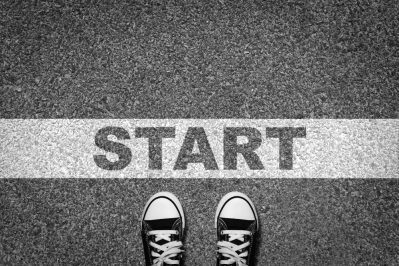Were it not for a global pandemic, you could certainly find the parking lot at your local gym packed with cars this week. While gyms are typically crowded in January with new members fired up by their New Year’s resolutions to get fit, the parking lot would likely be back to normal volume within just a few weeks as that motivation dissipates.
This anecdotal example is part of plenty of data demonstrating that bold resolutions often don’t work.
Many of us do find ourselves with increased motivation at the beginning of a day, month or, especially, year. The start of a new year is a natural point of reflection and recalibration. It’s a great time to assess what you want most and re-align your life, behaviors and goals around those principles.
A new year is an opportunity for us to build the behavioral habits and accountability structures needed for success, rather than making bold declarations about major life changes or attempting to hack our way to success.
Over the past few years, I have collected some best practices that helped me with my annual planning, and have yielded great results. Here are my favorites.
Everything begins with getting clarity on what you really want most; for many people this starts with discovering and developing your core values. If you are interested in starting down this road, I have some great resources from my book Elevate, a free tool called Whole Life Dashboard, and recently launched my first course on building a written list of core values.
From there, start brainstorming long-term goals that serve your values so you can align your short-term goals as deposits toward those future objectives. This year, in addition to setting my one-year goals, I also recalibrated my three- and five-year goals. Goals should be arranged similarly to a pyramid, where the one- and three-year goals lay the foundation to build toward your five-year goals.
For annual goals, a similar tactic I’ve learned is leveraging the Domino Effect. Start by picking one of your bigger, more challenging goals; then, identify the different plans, tasks and relationships that will be needed to get there. As each domino falls over time, it helps secure the eventual outcome. There is only one ultimate goal, but many supporting tactics.
For example, if I set a goal to sell a new book to a publisher, the key dominos that build toward this goal could be to draft 100 pages, find a literary agent, research publishing houses that have released similar books to mine, and double my email list. Completing these smaller actions greatly increases my chances of hitting my bigger goal of publishing a book.
We’ve even turned goal-setting into a fun family activity, sitting down in early January to create Family Vision Boards focused on the upcoming year. It’s a great way to teach kids how to set goals and visualize what is most important to them.
Finally, to do something new or different in your life, you need to take some things off your plate to create space. Here are four tactics to help.
- When you are asked to take on something new, remember the “Hell Yeah or No” rule.
- Along with your goals, create a “Stop Doing List” for the upcoming year.
- Get rid of the things you don’t need or want in your life to free up physical and mental space. I have spent the past week donating and giving away my old things I don’t use anymore and it’s been cathartic.
- Similarly, think about how you can start to rid your life of energy vampires, the people who take your energy and leave you feeling exhausted.
This year, resolve to skip the resolutions. Instead, do the hard work to figure out what you want, brainstorm and align your goals, create accountability for yourself and decide what and who you need to give up along the way.
Quote of The Week
“Just as your car runs more smoothly and requires less energy to go faster and farther when the wheels are in perfect alignment, you perform better when your thoughts, feelings, emotions, goals, and values are in balance.”
– Brian Tracy









